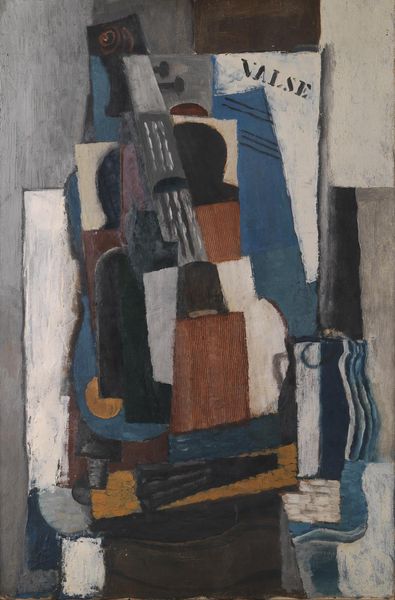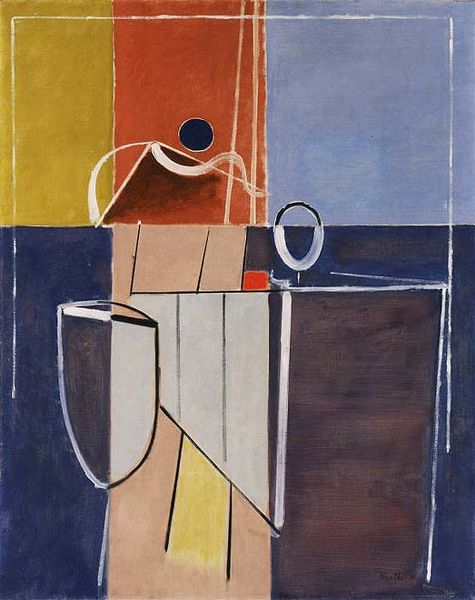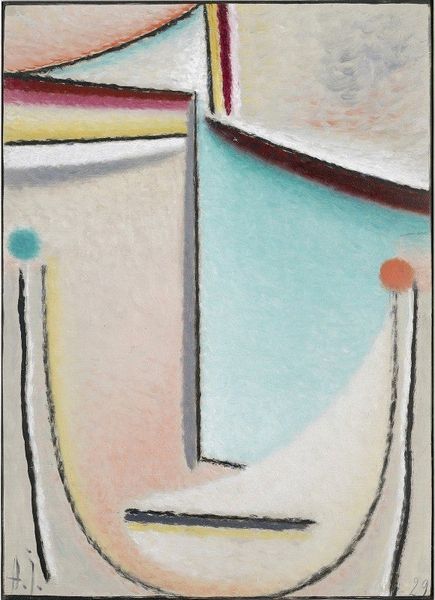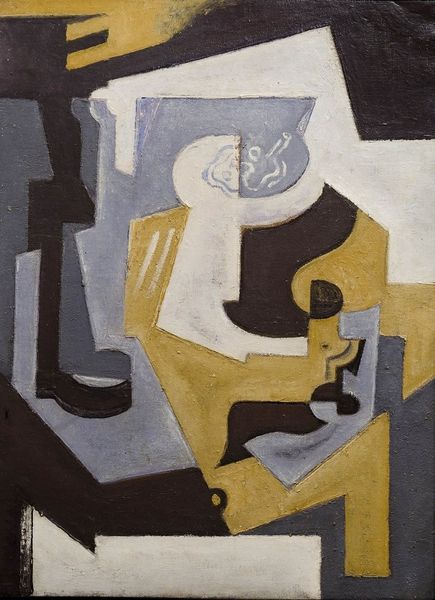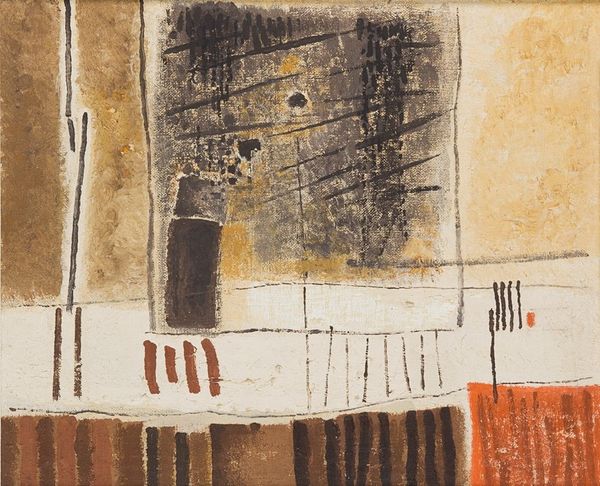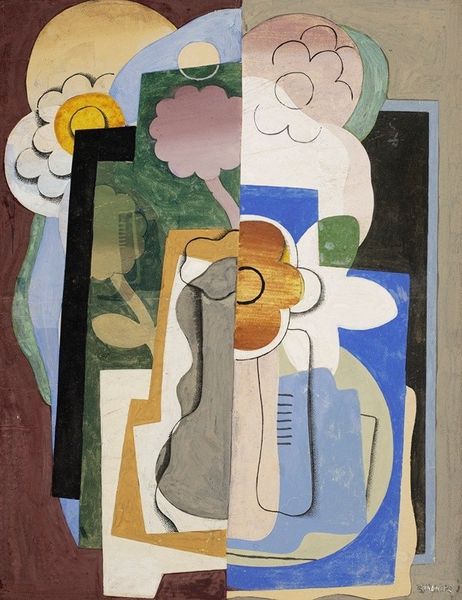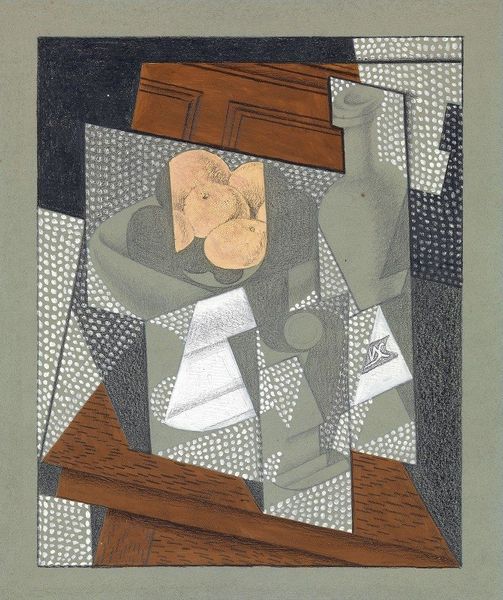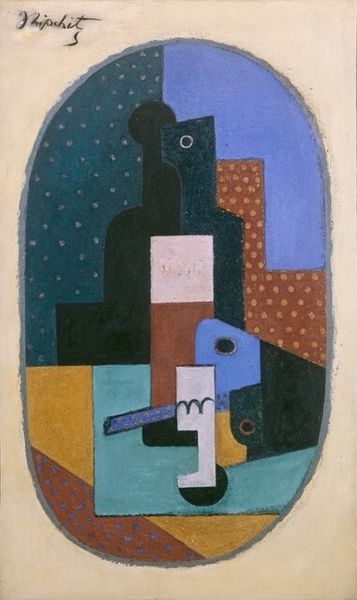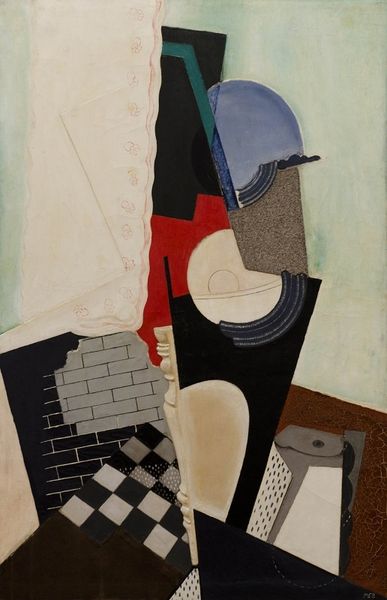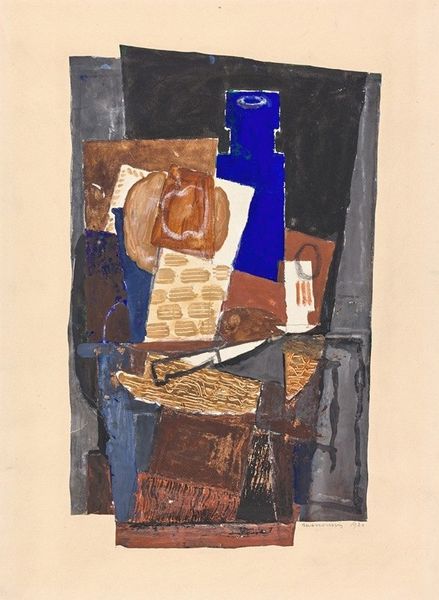
drawing, tempera
#
drawing
#
water colours
#
tempera
#
abstraction
#
modernism
Copyright: Public domain
Editor: So, we're looking at Vajda Lajos's "Asztali Csendélet," created in 1934, using tempera and pencil on paper. The texture of the paper really stands out, giving this still life a uniquely aged feel. How do you interpret this work, focusing on the materials and how they were used? Curator: This piece speaks volumes about the economic realities faced by artists at the time. Vajda’s choice of humble materials—tempera on paper, rather than oils on canvas—suggests a resourcefulness born of necessity. Consider how the paper itself isn't treated as a neutral ground, but actively participates in the composition through its texture and absorbency. The visible pencil underdrawing also reveals the labor involved, doesn’t it? It exposes the process, making the artistic labor very clear. Editor: That's interesting. I hadn't considered the economic aspect so directly. I was focused on the aesthetics, on the almost rough, raw quality that the materials impart. But when you talk about labour I start to see all the production processes. Does that make it "less" valuable? Curator: Quite the opposite! By foregrounding the means of production—the cost, the labor, the availability—Vajda elevates the everyday. This shifts the focus from purely aesthetic concerns to a broader consideration of value itself: what constitutes art, who has access to it, and how is it made? Even something as simple as the colour pigments have a production origin. Editor: That’s a compelling way to think about it. It's almost like Vajda is making a statement about art consumption. Curator: Exactly! And by forcing us to confront the material reality of the artwork, Vajda encourages a more critical engagement with the social and economic systems that shape our understanding of art and value. So, what will you remember from it all? Editor: Definitely the production aspect as a crucial element that adds layers to my understanding and appreciation of Vajda's still life. Thank you!
Comments
No comments
Be the first to comment and join the conversation on the ultimate creative platform.

